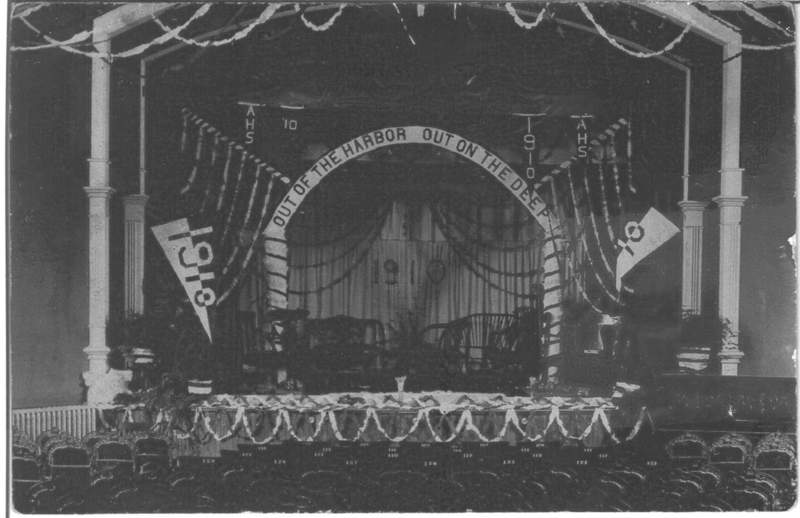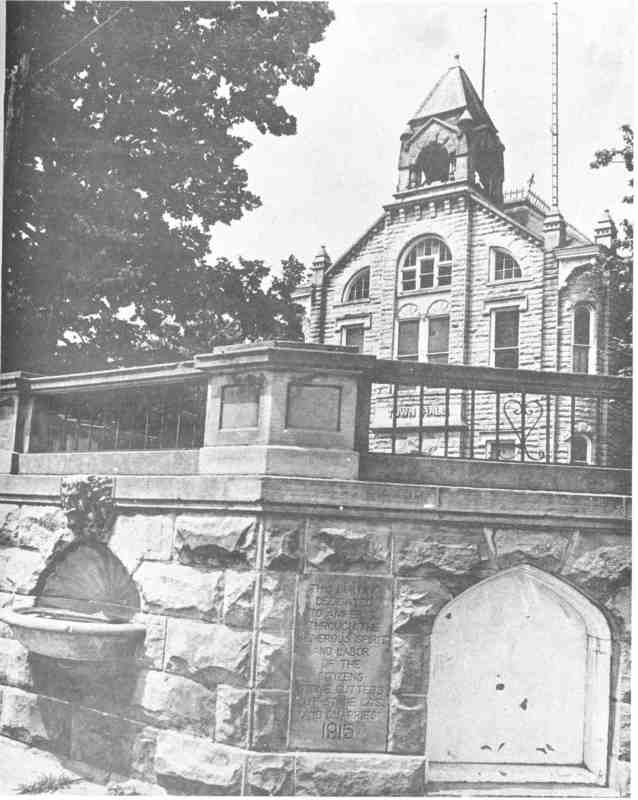Amherst Town Hall

Did you know that there is an opera house in Amherst? In the upstairs of Amherst's Town Hall, a performance space was built where operas and lectures were held in the late 1800s and early 1900s.
The building of a town hall in Amherst was many years in the making. Starting in 1875 Mayor A.C. Moore requested of the city council that a town hall be built. In a speech he gave to council on April 11, 1876 he stressed the need for a community space, but did not want to rush the process: "What kind of structure will it be? Where shall it be located? How shall the necessary funds be raised?...There are questions that require mature thought." Mayor Moore also described his vision of the hall: "Symmetry and neatness have much to do with beauty and can be obtained without extravagance...A commodious hall is one of the means which invites lecturers on literary, scientific, and moral questions."
Not until 1884 was a town hall finally built. Costing between $2,000 and $3,000, the hall was located on land given by Judge Josiah Harris and originally set aside for a public square. The building material of choice was, of course, sandstone. The bottom floor housed the Amherst Police, the first floor became city offices, and an auditorium was constructed on the second floor. Operas and lectures could now come to Amherst.Tickets for the events at the Opera House were sold at Kuss' Drug store on Park Avenue. School graduation ceremonies were also held upstairs. By the early 1940s, Amherst high school students performed plays on the Town Hall Stage including "The Night of January Sixteenth," "Our Town" and "Death Takes a Holiday."
In 1915, a large sign was constructed in front of Town Hall, boldly stating "Amherst: Sandstone Center of the World." This phrase was coined by local businessman O.H. Baker, who first used it on his stationary in 1910. In 1955, South Amherst residents claimed that the title was rightfully theirs and the sign was removed. It was later restored after Cleveland Quarry officials confirmed that both communities had massive amounts of sandstone in their quarries. In 2003, the Ohio Bicentennial Commission officially recognized Amherst's title of "Sandstone Center of the World" and placed an Ohio Historical Marker near the original sign.
By the late 1950s, the Town Hall Stage fell into disrepair and was being used by the Amherst police as a shooting range and storage facility. Although the Amherst police eventually moved out and took their target practice elsewhere, the auditorium in the Town Hall still sits empty and unused today.
Audio
Images




